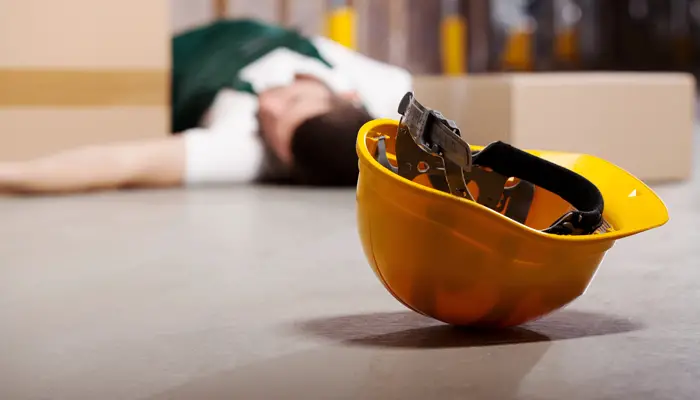If you’re looking to revise for your CSCS test and need some revision notes to help you ace the test, you’re in the right place.
These CSCS revision notes cover what you need to know to answer the “First Aid and Emergency Procedures” questions for the 2025 CSCS test.

To keep the revision process as simple as possible, we’ve listed one factual statement for you to familiarize yourself with, followed by a key point extract. The key point extracts contain the answers to the questions you’ll face on your test day.
CSCS Revision – First Aid and Emergency Procedures
1. An emergency on-site can emerge within seconds, that’s why everyone needs to remain calm and follow their site emergency plans whenever an emergency arises.
- Key point: If there’s an emergency on-site, follow your site emergency plans.
2. First aid kits are vital for every workplace. They can contain bandages, safety pins, plasters, antiseptic wipes, gloves, tweezers, and other essential care items. They should not contain any tablets or medicines.
- Key point: A first aid kit should not contain tablets or medicines.
3. A near miss can be a scary experience for the person/persons involved. After a near miss occurs, the tasks or activities being carried out at the time must be recorded accurately.
- Key point: If there’s a near miss, the activities being carried out at the time need to be recorded.
4. First aid kits should always be stocked and ready to use if there’s an emergency. If your workplace first aid kit is empty or missing key items, you should inform the person in charge of looking after the first aid kit.
- Key point: If your first aid kit at work is empty, inform the person in charge of it.
5. Trained first aiders play a vital part in every work site. They’re allowed to patch up minor cuts or scrapes you might have, but they’re not allowed to give you any medicines without authorization.
- Key point: First aiders are not allowed to give you medicines without authorization.
6. Witnessing someone come into contact with a live electrical cable can cause panic and confusion on your part. If this does happen, the first thing you should do is try to isolate the power and then call the emergency services for help.
- Key point: if someone comes into contact with a live cable, you should first try to isolate the power and then call for help.
7. If you scrape or cut your finger and it’s bleeding continuously, you should seek help from a first aider immediately.
- Key point: if you get a cut, find a first aider for help immediately.
8. Evacuation routes are pre-designated routes designed to be used in the event of an emergency. For these to remain effective, all evacuation routes must be kept clear and unobstructed at all times.
- Key point: Evacuation routes should always be clear and unobstructed.
9. If you’re new to a work site and not familiar with the site emergency procedures and emergency contact numbers, you can learn more about these when attending the site induction, or you should be able to get more information from the site noticeboards.
- Key point: Information regarding site emergency procedures and related emergency contacts will be discussed at the site induction, they should also be on the site noticeboards.
10. Employers have a legal duty to provide your work site with first aid kits, it’s not your responsibility to provide your own.
- Key point: Your employer must provide the work site with first aid kits.
11. If you’re working and there’s an emergency, stop what you’re doing, find your nearest exit and leave the area, then go to your pre-designated emergency assembly point.
- Key point: if there’s an emergency, stop what you’re doing immediately, exit the area, and go to your emergency assembly point.
12. Finding an injured person while working on your own can be a scary experience. If this ever happens to you, stop and assess your surroundings to ensure you are not in any danger.
- Key point: Always ensure you’re not putting yourself in danger, even if you’re trying to help someone else.
13. Falling from height is one of the most common causes of death among construction workers. If you ever witness someone fall from height, and they’re complaining about not having feelings in their legs, you should try to keep them still while medical help arrives.
- Key point: If someone falls and can’t feel their legs, keep them still until help arrives.
Wrapping up
Hopefully, you’ve learned something new from these CSCS revision notes. Remember to keep revising and practicing with our 2025 CSCS mock test to improve your chances of passing first try. Good luck!
